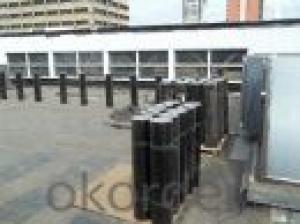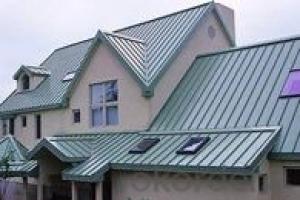Spunbond Polyester Mat /filament Polyester Mat For APP/SBS Waterproof Membranes
- Loading Port:
- Shanghai
- Payment Terms:
- TT OR LC
- Min Order Qty:
- 1000 m²
- Supply Capability:
- 200000 m²/month
OKorder Service Pledge
OKorder Financial Service
You Might Also Like
Product description
Produced by the Modern Waterproofing Company,Spunbond Polyester Mat /filament Polyester Mat For APP/SBS Waterproof Membranes is a line of polymer-modified bitumen waterproofing membrane of the highest quality.
Spunbond Polyester Mat /filament Polyester Mat For APP/SBS Waterproof Membranes is modified by SBS, thus guaranteeing high flexibility under very low temperature.
SBS Waterproofing membranes reinforced with Polyester suitable hot and cold atmospheres - Cold Flexibility -10 : -20 C
Spunbond Polyester Mat /filament Polyester Mat For APP/SBS Waterproof Membranes is reinforced with composite polyester (P) of non-woven polyester armoured with glass fiber filaments which provides highly mechanical properties and dimensional stability.
Spunbond Polyester Mat /filament Polyester Mat For APP/SBS Waterproof Membranes with Mineral Slated Finish is recommended for exposed roofing system (Unprotected) for Non-accessible roofs or roofs subject to low traffic conditions
Packaging & Shipping
Package and transportation-- SBS waterproof membrane / APP waterproof membrane / Asphalt waterproof membrane for building waterproofing construction :
1. Torch on bitumen membrane sheets 4mm should be stored under dry and ventilated conditions.
2. Different types of membranes must be piled separately.
3. Under usual condition, storage period is one year since production date.
4. Membrane roll should be put vertically during transportation. It should be kept away from sunshine and rainwater.
.
Advantagee
Easy to apply (by torch)
Highly mechanical properties
Absolute impermeability to water
High elasticity at sever low temperature from -10°C up to -20°C
Resistant to chemicals attack probable to be existing in soil
Excellent high temperature performance
Excellent adhesion on any surface
High dimensional stability
Environmentally friendly
Applicable scope:
It is widely used for civil building roofing, underground, bridge, parking, pool, tunnel in the line of waterproofing and dampproofing, especially for the building under high temperature.
Product Range
Standard thickness available includes 3mm and 4mm. Some types could be available by weight 3kg/m2 and 4kg/m2.
Bottom surface finish is normally Polyethylene Film (PE).
Upper surface finish choices include:
Polyethylene Film (PE)
Fine Sand (S)
Mineral Slated Grey (GY)
Mineral Slated Green (GRN)
Mineral slated White (WT)
Mineral slated Red (RD)
Slated rolls are available in 4kg, 4.5kg and 5kg per square meter.
The nominal length of each roll is 10 meters and the nominal width is one meter.
Special specification can be designed based on client’s need
Storage:
Different types or specifications of products should be separated, not mixed.
Keep it dry and ventilated, protected from the sun or rain.
Storage temperature should never be higher than 45 °C. Pile up the membranes flatwise whose stockpile height never exceeds five layers. One layer is guaranteed if it is placed vertically.
Prevent it from inclination or In the process of transportation, it should be lying in case of inclination or lateral pressure. If necessary, cover it with felt-cloth.
Storage time is at least one year from manufacture date on if the product is under normal operation of storage.
Technical Parameters
Item | Index | ||||||
1 | Thickness of resin layer of the middle fabric ,mm≥ | - | - | 0.40 | 0.40 | 0.40 | |
2 | Tensile performance | Max tensile strength,N/cm ≥ | - | 120 | 250 | - | 120 |
Tensile strength,NPa ≥ | 10 | - | -10 | - | - | ||
Max elongation% ≥ | - | - | 15 | - | - | ||
Breaking elongation % ≥ | 200 | 150 | - | 200 | 100 | ||
3 | Heat treatment size change rate%≤ | 2.0 | 1.0 | 0.5 | 0.1 | 0.1 | |
4 | Cold bonding | -25°c No cracks | |||||
5 | Watertightness | 0.3mPa,2h waterproof | |||||
product show
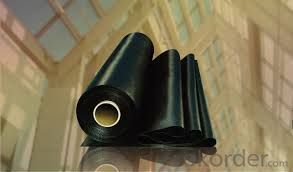
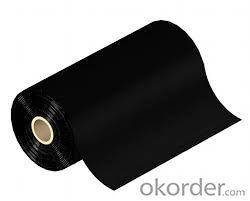
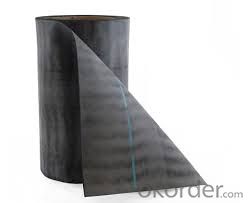
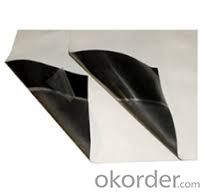




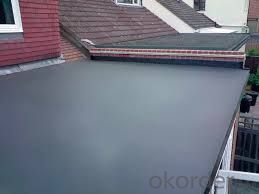
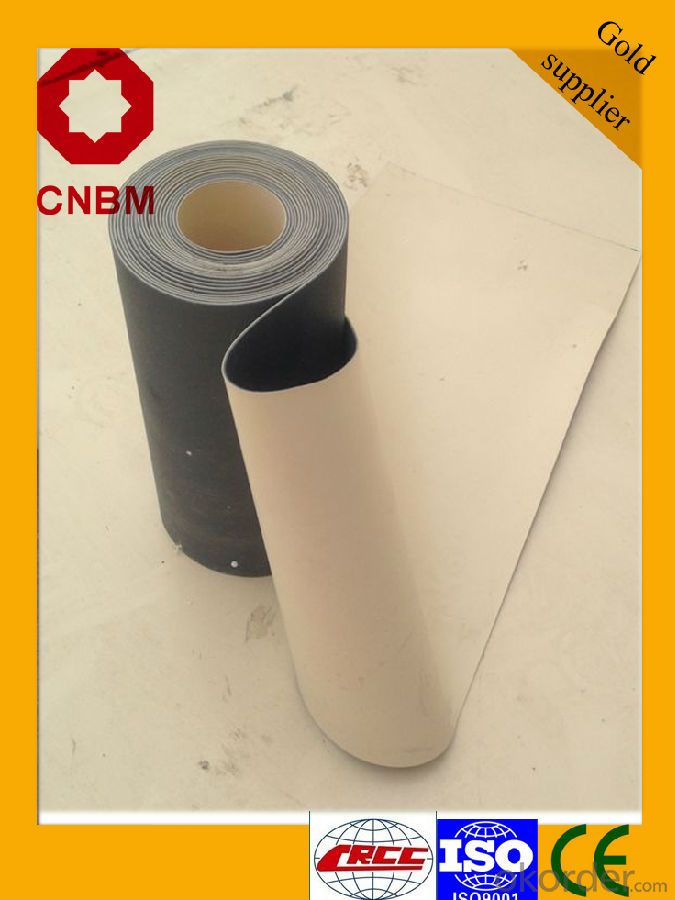
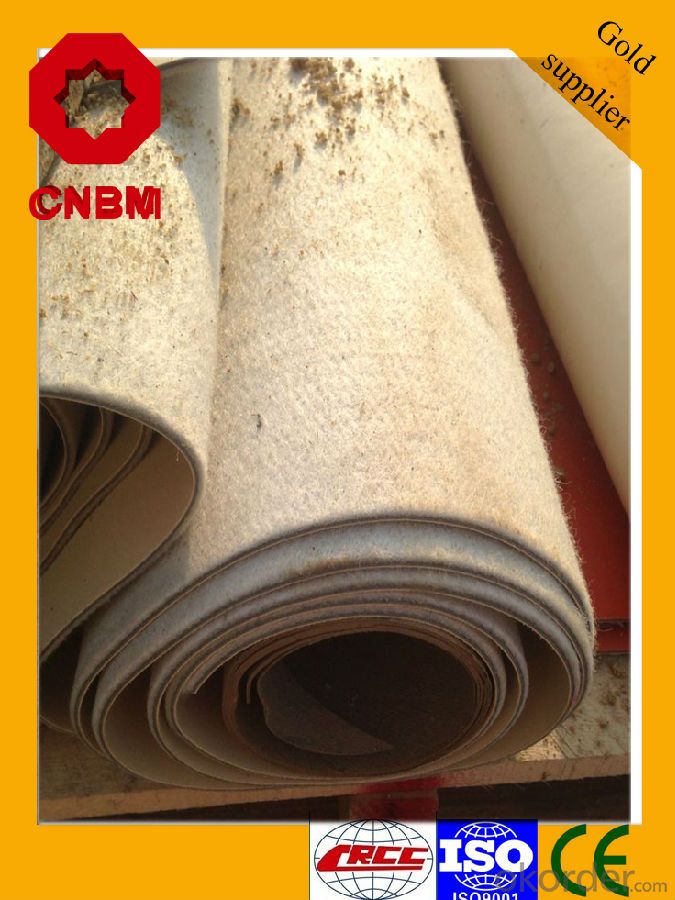
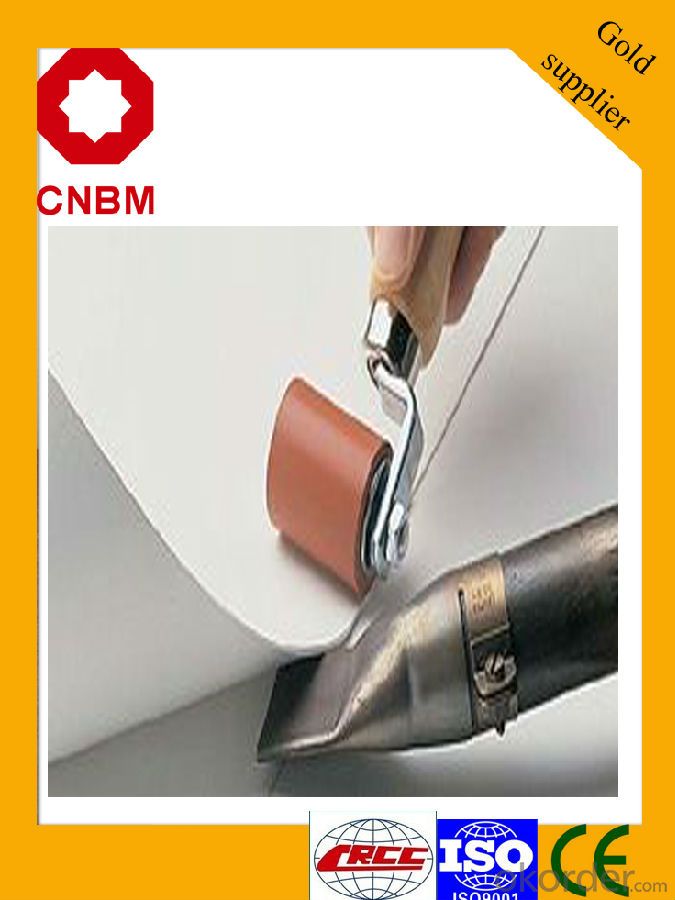

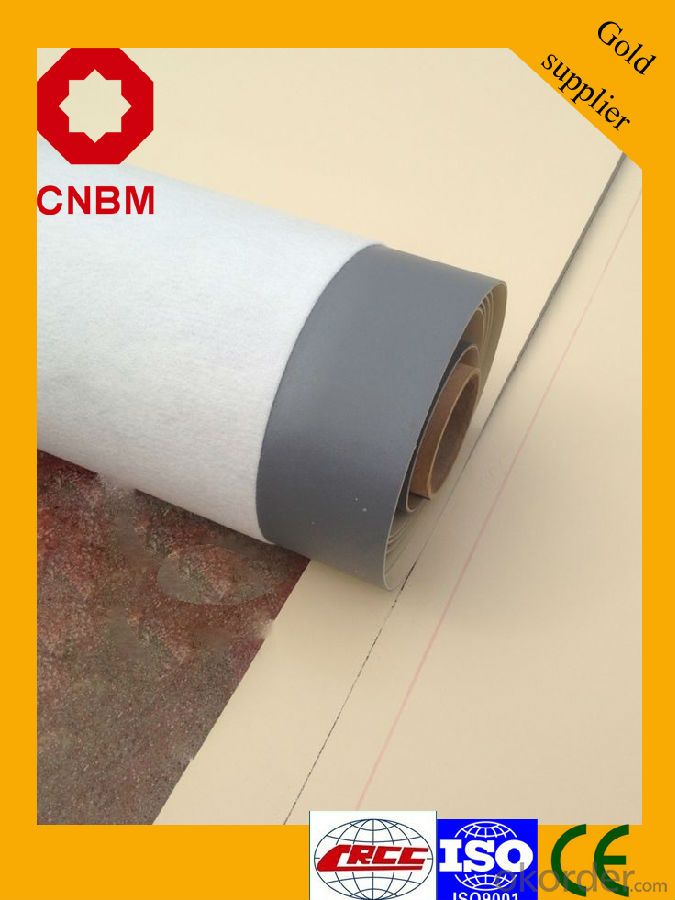
FAQ
Q: What's the de6abf1fe186f8d58506cbcfe46eed814d.jpglivery time ?
A: 3-5 days for 1-600 rolls, 10-15 days for container.
Q: What's the payment terms ?
A: TT/LC
Q: How do you make replacement with quality problems ?
A: New replacement will be packed into your next order or send to you directly after receive video or photo about quality problems.
- Q:Can a waterproofing membrane be used on retaining walls?
- Yes, a waterproofing membrane can be used on retaining walls. Waterproofing membranes are commonly applied to retaining walls to prevent water penetration and potential damage to the structure. They help create a barrier that prevents moisture from seeping into the wall and causing erosion, cracking, or weakening of the materials.
- Q:Can a waterproofing membrane be used for a rooftop garden protection?
- Indeed, rooftop garden protection can be achieved through the utilization of a waterproofing membrane. Specifically formulated to impede water penetration, this type of membrane proves to be an optimal selection for safeguarding a rooftop garden. By establishing a protective barrier, it effectively bars water infiltration, thus averting any possible harm to both the rooftop's structure and the garden's flora. Furthermore, certain membranes provide supplementary advantages, including resistance to UV rays and roots, thereby augmenting their suitability for the safeguarding of rooftop gardens.
- Q:Can a waterproofing membrane be used on tunnels with architectural features?
- Yes, a waterproofing membrane can be used on tunnels with architectural features. Waterproofing membranes are versatile and can be applied to various types of structures, including tunnels with architectural features. These membranes are designed to create a barrier against water infiltration, protecting the structure from moisture damage. Whether the tunnel has unique architectural features such as curves, arches, or decorative elements, a waterproofing membrane can be customized and applied to ensure complete waterproofing. It is essential to consult with a professional waterproofing contractor who has experience in working with tunnels and architectural features to determine the most suitable membrane system for the specific project requirements.
- Q:Can a waterproofing membrane be used for dams?
- Yes, a waterproofing membrane can be used for dams. Dams are structures built to hold back water and create reservoirs. It is crucial to ensure that these structures are watertight to prevent leakage and potential damage. Waterproofing membranes are commonly used in dam construction to create a barrier that prevents water from seeping through the dam and causing erosion or compromising its structural integrity. These membranes are typically made of durable materials, such as rubber or reinforced PVC, which are designed to be resistant to water pressure and long-lasting. Additionally, the installation of a waterproofing membrane can also help to mitigate the potential risk of seepage and leakage in the dam, ensuring the safety and effectiveness of the overall structure.
- Q:Can a waterproofing membrane be used in kitchens?
- Yes, a waterproofing membrane can be used in kitchens. In fact, it is highly recommended to use waterproofing membranes in areas prone to moisture and water exposure, such as kitchens. These membranes are designed to create a barrier against water and prevent it from seeping into the underlying structure, protecting it from damage. They are commonly used on floors, walls, and even countertops to ensure a watertight seal and prevent water damage, mold growth, and other issues. Additionally, waterproofing membranes can also help with soundproofing and provide added durability and longevity to the kitchen surfaces.
- Q:Can waterproofing membranes be used on below-grade parking structures?
- Yes, waterproofing membranes can be used on below-grade parking structures. These membranes are designed to prevent water infiltration and protect the structure from potential water damage. They are commonly used in below-grade applications to ensure the longevity and structural integrity of the parking facility.
- Q:Are waterproofing membranes suitable for residential basements?
- Yes, waterproofing membranes are suitable for residential basements. Waterproofing membranes are designed to prevent water infiltration and protect the basement from moisture damage. They can be applied to the exterior or interior of the basement walls to create a barrier against water and dampness. This helps to prevent issues such as mold growth, water damage, and structural deterioration. Waterproofing membranes are an effective solution for residential basements as they provide long-lasting protection and can help to create a dry and healthy living environment.
- Q:Does a waterproofing membrane require any specific cleaning or maintenance procedures?
- To ensure the longevity and effectiveness of a waterproofing membrane, it is necessary to follow specific cleaning and maintenance procedures. Regular cleaning and maintenance are important to prevent the accumulation of debris, dirt, and contaminants that could compromise the membrane's ability to keep water out. The exact procedures for cleaning and maintenance may vary depending on the type of waterproofing membrane used, but there are some general guidelines to follow. Firstly, it is crucial to frequently inspect the membrane for any signs of damage, such as cracks, tears, or deterioration. If any issues are found, they should be addressed promptly to prevent further damage. When it comes to cleaning, it is recommended to use a soft-bristle broom or a leaf blower to remove loose debris or dirt from the membrane surface. It is important to avoid harsh chemicals or abrasive materials that could harm the membrane. Instead, a mild detergent or specialized cleaning solution recommended by the manufacturer should be used. The surface can be gently scrubbed with a soft brush or sponge and thoroughly rinsed with clean water. Additionally, it is vital to keep the surrounding drainage systems clear and free from obstructions. Regular inspection and cleaning of gutters, downspouts, and drains are necessary to ensure proper water flow and prevent potential water damage. Lastly, it is advisable to have the waterproofing membrane professionally inspected and maintained on a regular basis. This will help identify any potential issues early on and ensure that the membrane is functioning optimally. By following these specific cleaning and maintenance procedures, the lifespan of the waterproofing membrane can be prolonged, and its effectiveness in preventing water infiltration can be maintained.
- Q:Can a waterproofing membrane be used on both horizontal and vertical surfaces of a structure?
- Both horizontal and vertical surfaces of a structure can benefit from the use of a waterproofing membrane. These membranes are specifically designed to create a barrier against moisture and are commonly utilized in various applications including roofs, basements, foundations, balconies, and walls. Due to their flexibility, they can easily adapt to different surface orientations, making them suitable for both horizontal and vertical installations. The flexibility of the membrane enables it to be applied and adhere effortlessly to different surfaces, effectively protecting against water infiltration and potential damage caused by moisture. Whether it is used on a roof or a wall, a waterproofing membrane is capable of preserving the integrity and longevity of a structure by preventing water penetration and potential water-related issues.
- Q:Can waterproofing membranes be used on green roofs?
- Indeed, green roofs can utilize waterproofing membranes. They serve as an indispensable element within green roof systems. The concept of green roofs involves a layer of plants and growing medium situated atop a waterproofing layer. It is this waterproofing layer that safeguards the building structure by preventing water infiltration and subsequent damage. The waterproofing membranes employed in green roof applications are specifically engineered to withstand the unique challenges posed by such installations, including exposure to water, UV radiation, and root penetration. These membranes are typically composed of durable materials such as PVC, TPO, or EPDM, renowned for their exceptional waterproofing capabilities. Moreover, certain waterproofing membranes used on green roofs may possess additional attributes like root resistance and UV stability, thereby ensuring the roof's longevity and imperviousness. Ultimately, the utilization of waterproofing membranes on green roofs plays a vital role in establishing a sustainable and enduring roofing system that not only provides water protection but also offers environmental advantages.
1. Manufacturer Overview |
|
|---|---|
| Location | |
| Year Established | |
| Annual Output Value | |
| Main Markets | |
| Company Certifications | |
2. Manufacturer Certificates |
|
|---|---|
| a) Certification Name | |
| Range | |
| Reference | |
| Validity Period | |
3. Manufacturer Capability |
|
|---|---|
| a)Trade Capacity | |
| Nearest Port | |
| Export Percentage | |
| No.of Employees in Trade Department | |
| Language Spoken: | |
| b)Factory Information | |
| Factory Size: | |
| No. of Production Lines | |
| Contract Manufacturing | |
| Product Price Range | |
Send your message to us
Spunbond Polyester Mat /filament Polyester Mat For APP/SBS Waterproof Membranes
- Loading Port:
- Shanghai
- Payment Terms:
- TT OR LC
- Min Order Qty:
- 1000 m²
- Supply Capability:
- 200000 m²/month
OKorder Service Pledge
OKorder Financial Service
Similar products
New products
Hot products
Hot Searches
Related keywords


